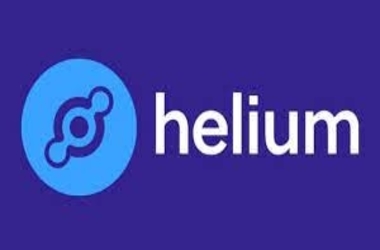
The present expansion was made possible by a community vote of 81.41 percent in favor of Helium Improvement Proposal (HIP) 70, which intended to evolve the Helium Network’s architecture to satisfy the needs of current and future users while remaining faithful to its original objective.
The shift to Solana is the most recent initiative to expedite network expansion and enhance usability for clients developing on Helium. It follows the debut of the Network of Networks, which enables support for an infinite number of wireless protocols, this summer. Helium’s move to Solana advances the ecosystem’s mission of delivering secure, ubiquitous, and affordable connectivity through an innovative incentive model, and integrates naturally with Solana’s rapidly expanding ecosystem of consumer-based applications, including Serum, Raydium, Metaplex, Phantom, Orca, and Audius, among others. The Helium Foundation and the Solana Foundation are partnering to achieve a smooth and effective transfer to Solana.
Scott Sigel, chief operating officer of the Helium Foundation, said, “We have an ambitious goal of creating and administering large-scale wireless networks, and switching to Solana enables us to accomplish it. Solana has a track record of powering some of the world’s most significant decentralized projects, making them a natural partner for us. Moving to the Solana blockchain enables us to concentrate on growing the network rather than maintaining the blockchain.”
Anatoly Yakovenko, CEO of Solana Labs and co-founder of Solana, said, “Solana, with its major differentiators of scalability, low cost, and energy efficiency, provides the appropriate platform for Helium to achieve its ambitious aim. The Helium community’s decision to shift to the Solana network is a significant vote of confidence in Solana as the basis for the ecosystem’s next development phase.
Core developers selected Solana after examining numerous blockchains over the course of many months. This decision will let the core team to transfer its attention from maintaining its own blockchain to supporting the expansion of new networks and developing unique wireless apps.
Through this transfer, network users will have improved access to hardware and software wallets, DeFi, NFT markets, and composability with other Solana ecosystem apps. In addition, Proof-of-Coverage activities will be more constant for Hotspot owners, with beaconing and witnessing happening every hour. In addition, 2 million HNT are returned yearly to the rewards pool, which benefits Hotspot owners throughout IoT and 5G networks.
Moreover, data transport for devices is now quicker, more reliable, and scalable, and HNT will become natively interoperable with other creative projects within the Solana ecosystem, providing HNT, MOBILE, and IOT token holders with greater benefit.
HNT, MOBILE, and IOT will continue to be the tokens in the Helium ecosystem after the relocation. Upon completion of the transfer, a new version of the Helium Wallet App will become accessible. Additionally, the history of the Helium L1 blockchain will stay public. Users may access the new application by upgrading their existing wallet application. HNT holders will also be able to use other Solana wallets, such as Phantom and Solflare.
This action comes at a crucial moment, as the deployment of Helium 5G quickly grows throughout the United States and more than 945,000 IoT Hotspots are already operational worldwide. Simultaneously, the desire for an alternative to conventional cellular is intensifying, and Helium is taking the next steps to include speedier blockchains with cheaper transaction costs. The migration of Helium to the Solana blockchain is presently expected to occur in the fourth quarter of 2022.